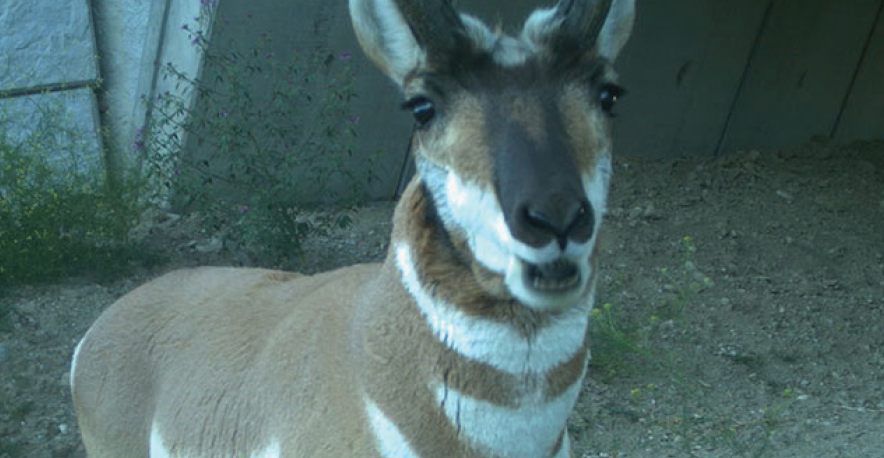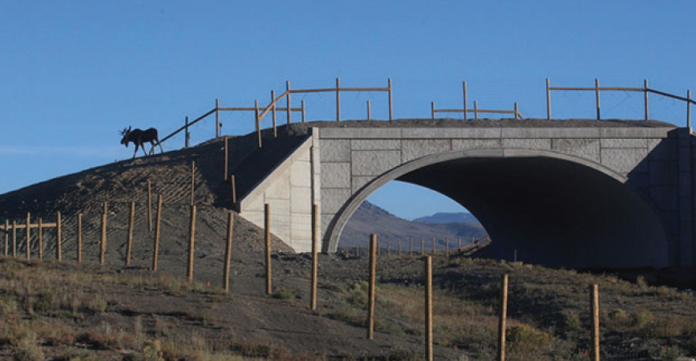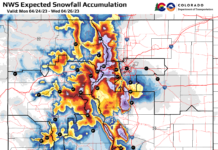by Marissa Lorenz
A 5-year effectiveness study of the Highway 9 Colorado
River South Wildlife and Safety Improvement project recently came to completion, concluding with “extreme success and as a model to promote similar projects in Colorado,” reports Michelle Cowardin, Wildlife Biologist with Colorado Parks and Wildlife (CPW).
History of Hwy 9 Safety Project
The Highway 9 Safety Project dates back to the early 2010’s, when area residents expressed concern over a small length of highway between Silverthorne and Kremmling and north of Green Mountain Reservoir. From 1993 to 2012, statistics from the Colorado Department of Transportation (CDOT) recorded 590 accidents, including 191 injuries and 16 fatalities, between mile markers 126 and 137. CPW documented 455 wildlife mortalities between 2006 and 2013. The roadway was identified as among the most impacted by wildlife migration in the state, as it divides a primary winter feeding area to the east of the highway from the only major source of water, the Blue River, to the west.
Recognizing the concern, locals formed the Citizens for a Safe Highway 9 Committee and adjacent Blue Valley Ranch provided over $800,000 in 2011 toward the initial design phase of the proposed project, to include wildlife fencing and crossings, 8-foot shoulders for eventual bike paths, and re-alignment to meet improved highway safety construction standards.
Funding was pursued through a limited state program known as RAMP, Responsible Acceleration of Maintenance and Partnerships, but required a 20 percent match by local governments. To meet the $9.2 million match of the $46 million project, Grand and Summit counties pledged $3.1 million and $250,000 respectively, a $4 million match was granted by Blue Valley Ranch, and the remaining $1.9 million was donated by the Towns of Kremmling, Silverthorne, and over 175 private individuals and organizations.
The result was an unprecedented public-private funding partnership for state highway improvements.
Construction was completed in two phases in 2015 and 2016 and included two wildlife overpasses– the first of its kind in the state– five wildlife underpasses, nine pedestrian walk-throughs, 62 wildlife escape ramps, 29 wildlife guards, and nearly 11 miles of 8-foot fencing on either side of the highway between Green Mountain Reservoir and Kremmling. The goal was to “improve driver safety while maintaining connectivity of wildlife movement across the road,” according to CPW. And in 2015, they partnered with CDOT and ECO-resolution, a consulting firm out of Golden, to begin a five-year
“effectiveness monitoring study.”
Project outcomes
Study reports have been submitted annually, with the four-year progress report recently concluded for December 2015 through April 2019. Monitoring was done with 62 motion-triggered cameras and analysis of
“wildlife-vehicle collisions carcass and accident data.” The data indicates that wildlife-related accidents decreased 88 percent and carcass counts were down 90 percent in the fenced area, with only six to eight wildlife fatalities as compared to the pre-construction average of 63 carcasses each winter.
Wildlife-related car accidents continue to happen south of the improvement section, but Cowardin states that the numbers do not seem higher than pre-project numbers on the same stretches of road.
Wildlife migration data demonstrates a high efficacy, especially for mule deer. “There have been over 83,000 mule deer success movements through or over the seven crossing structures,” according to the four-year report, with increased movement each year and averaging 168 “success movements” each day from November 2018 and April 2019. The numbers count successful crossings and not individual animals.
Cowardin says that they have seen “every species in the area using an overpass or underpass, including deer, pronghorn antelope, bighorn sheep, moose, mountain lions, black bears, coyotes, and foxes. We even had a pair of river otters and a flock of turkeys use an underpass.” She goes on to tell about seemingly hesitant elk trailing deer through an underpass, “following the leader” and possibly learning from the deer. Success movements by other species have been fewer than by the mule deer. “These numbers reflect the relative proportion of the species in the landscape but are expected to continue increasing as more individuals learn to use the structures,” reads the report.
“The project has exceeded our expectations, as far as decreasing wildlife collisions and as to how readily all the species have taken to the structures,” concludes Cowardin. She intends to present all study findings to the Kremmling Town Board, but will likely wait until the final monitoring report is complete.
Highway 9 as a project model
The success of the program has garnered attention outside of the project participants as well.
“The results of the car versus wildlife collision numbers speak for themselves,” says Grand County Commissioner Merrit Linke, who was also part of the Board of County Commissioners who approved $3.1 million for the project in 2013.
“The entire project has become a statewide and even national model of how community-based public-private partnerships can solve problems relating to safety for both citizens and wildlife.”
And indeed, Cowardin explains, “It’s promoting these projects across the state.” She cites current projects on I-25, in the southwest corner of the state, and recent discussions by the Summit County Safe Passages group about I-70 structures on the east side of Vail Pass. She explains that the Safe Passages organization has also discussed the possibility of extending the existing Highway 9 project south toward Silverthorne.
Just a few weeks ago Cowardin also presented the project as a part of the National Wildlife Federation’s “Wildlife Crossing Week,” hosted in collaboration with Animal Road Crossing Solutions. The two national organizations are part of
a coalition working to build the largest wildlife overpass in the world, near Los Angeles, California.
More information on the Highway 9 Safety project– full monitoring reports, photos, and videos– can be found at cpw.state.co.us/hwy9. Cowardin’s Wildlife Federation video can be found on Facebook @p22mountainlionofhollywood. You can learn more about the Safe Passages group at SummitCountySafePassages.org.










